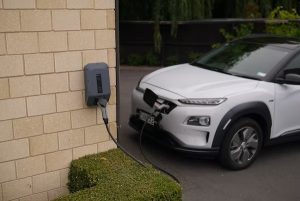According to climate scientists, one of the best methods to lower emissions of the greenhouse gases that warm the world is to electrify vehicles. The major source of emissions in the US is the transportation industry, primarily from vehicles and trucks.
For electric vehicles, the higher initial cost is typically mitigated over time by reduced long-term maintenance expenses and cheaper charging rates as compared to fuel prices.
According to the updated data, hybrid vehicles—which occasionally require a plug-in and operate on a combination of fuel and battery power—had more inconsistent results in terms of costs and pollution. Some hybrids cost less and released less of the greenhouse gas carbon dioxide than ordinary cars, while others had similar emissions and prices to gas-only cars.
Traditional gas-powered vehicles were typically the least environmentally friendly choice, while their long-term costs and emissions were quite variable. The majority of the time, compact automobiles were less expensive and more economical than gas-powered SUVs and high-end sedans.
Check out our leasing deals for the greatest automobiles at the best costs if you’re already set on an electric vehicle.

With electric vehicles, you can protect people and the environment for years to come by reducing smog pollution around you right away and greenhouse gas emissions. The next generation will appreciate it.
Production Process
It is true that producing an electric vehicle now uses more carbon than producing a conventional vehicle; this is mostly because lithium-ion batteries are produced using electricity.
The overall carbon emissions per vehicle will go down as economies of scale increase and more of our factories are powered by renewable energy. Manufacturers are generally working to create fresh concepts for a carbon-neutral future. Well-known automakers like BMW, Tesla, and the Volkswagen Group have made significant commitments to reduce and offset emissions, and Swedish electric vehicle manufacturer Polestar has gone even farther and promised to develop a “really” carbon-zero car by 2030 – without relying on carbon offsetting.
An EV’s life-cycle emissions are already around three times lower than those of a typical new internal combustion engine vehicle, and even at this point, it only takes an EV about two years to catch up with production. Naturally, things will grow better when the grid becomes more environmentally friendly.
Performance of electric vehicles is improved.
Contrary to popular belief, combustion vehicles cannot compete with electric automobiles in terms of power, torque, or acceleration. Due to their low center of gravity and the weight of the batteries positioned in the chassis, they also generally handle well.
Yes, combustion engines continue to outperform electric vehicles for long distances on the track due to their significantly higher fuel efficiency, but this is likely to change as battery energy density continues to increase.
The price of electric vehicles will soon decline
The expense of electric cars, which is mostly due to the cost of manufacturing the batteries in them, is perhaps the biggest deterrent to consumers purchasing them.
Fortunately, it is also where possibly the most development is taking place. A complete battery electric car will soon cost the same to purchase as an identical combustion car thanks to battery costs declining at a rate of about 20% each year.
Until then, drivers in the UK can take advantage of government incentives and tax breaks to benefit financially from electric vehicles.
In any case, incredibly few people ever drive their car on a racetrack. We want our performance to accelerate quickly from stoplights, pass vehicles without incident, and take a leisurely (but responsible) rural trip. The electric automobile is winning in each of these categories.

Clean up the planet
Benefits for the Environment and Health
Even when energy generation is taken into account, an electric car’s complete electric mode results in zero tailpipe emissions, significantly reducing smog and greenhouse gas emissions.
Cleaner vehicles promote greater health and cleaner air. 93% of Californians reside in locations where the air quality is below federal or state requirements, which has a number of negative consequences, particularly on children and the elderly. Additionally, the effects of greenhouse gases and climate change are already being seen in California and around the world.
Favoring the network
We will be able to produce a flatter energy network demand profile over a typical 24-hour period if EV charging is successfully managed, particularly outside of peak electricity demand periods. It will enable us to:
- use the electricity network more efficiently
- assist EV owners in avoiding more expensive charging times
- increase the effectiveness of the overall electrical system
- support the grid’s ability to include more large- and small-scale renewable energy sources.
- Better for our security of energy
EVs can contribute to the security of Australia’s liquid-fuel energy supply on a national scale. Australia currently imports a significant amount of petroleum from foreign nations.
We are less dependent on foreign oil because it is simple to fuel EVs using domestic and renewable energy sources. If fuel supplies to Australia are ever interrupted or fuel prices rise considerably, EVs won’t be impacted.
